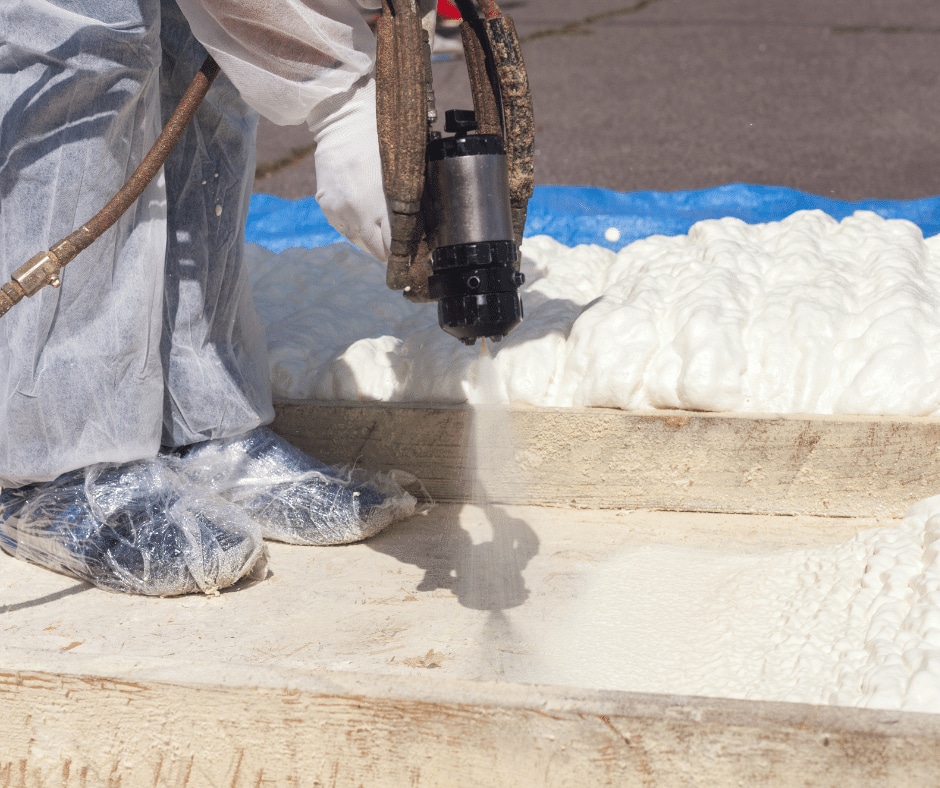Spray Foam Insulation
Spray foam insulation is a type of insulation that is sprayed onto walls, ceilings, and other areas in order to provide a barrier against heat loss. Spray foam insulation can be made from either polyurethane or polystyrene, and it is often used in both residential and commercial applications. Spray foam insulation is highly effective at preventing heat loss, and it can also help to reduce noise levels and improve the overall comfort of a space. In addition, spray foam insulation is also fire resistant, making it an ideal choice for use in areas where there is a risk of fire.
How Much Does a Spray Foam System Cost?
When considering the cost of a spray foam system, there are several factors to take into account. The size of the system, the type of foam being used, and the installation process all play a role in the final price. However, the most important factor to consider is the R-value of the foam. The R-value is a measure of thermal resistance, and it determines how well the foam insulates. The higher the R-value, the more expensive the foam will be. However, it is important to remember that spray foam systems provide a lifetime of benefits, so they are worth the investment. In addition to insulating your home or business, spray foam can also help to reduce energy costs, improve indoor air quality, and reduce noise pollution. As a result, spray foam systems offer an excellent return on investment. For more information on pricing and installation, please contact your local spray foam contractor.
How Long Does Spray Foam Insulation Last?
Spray foam insulation is a type of insulation that is applied as a liquid and then expands to form a solid barrier. It is commonly used in both residential and commercial applications and can provide excellent energy savings. One of the advantages of spray foam insulation is that it does not settle over time, so it can provide long-lasting energy efficiency. Additionally, spray foam insulation is resistant to pests, mold, and mildew, so it can help to create a healthier indoor environment. When properly installed, spray foam insulation can last for many years, making it a wise investment for any home or business.
What Are the Advantages of Spray Foam Insulation?
When it comes to insulation, there are many different options available on the market. One type of insulation that has gained popularity in recent years is spray foam insulation. Spray foam insulation is made from a combination of substances that are sprayed onto a surface. The substance then hardens and forms a barrier that helps to prevent heat transfer. There are many advantages to using spray foam insulation, including the following:
It is effective at sealing cracks and gaps: One of the main benefits of spray foam insulation is that it can help to seal cracks and gaps in your home. This is important because heat can escape through these small openings, making your home less energy-efficient. By sealing these cracks and gaps, you can help to keep your home at a comfortable temperature year-round.
It can help reduce your energy bills: Because spray foam insulation helps to prevent heat transfer, it can also help you save money on your energy bills. In fact, studies have shown that homes insulated with spray foam use up to 50% less energy than homes without insulation. This can add up to significant savings over time.
It is environmentally friendly: Another advantage of spray foam insulation is that it is considered to be environmentally friendly. This is because it is made from recycled materials and does not emit any harmful chemicals into the atmosphere. Additionally, because it helps you save energy, it also reduces your carbon footprint.
Do I Need to Remove Old Insulation Before Using Spray Foam Insulation?
When it comes to insulation, there are many different options available on the market. One of the most popular choices is spray foam insulation. This type of insulation offers a number of benefits, including its ability to fill small cracks and crevices, as well as its high R-value. However, one question that often comes up is whether or not old insulation needs to be removed before using spray foam insulation. The answer depends on a few factors.
First, if the old insulation is in good condition and not damaged, then it can be left in place. Second, if the old insulation is loose or has gaps, then it should be removed so that the spray foam can properly adhere to the surface. Finally, if the old insulation is made of a material that is not compatible with spray foam, such as fiberglass, then it will need to be removed before applying the new insulation.
Ultimately, the decision of whether or not to remove old insulation before using spray foam insulation depends on the condition of the existing material and the type of surface that it is being applied to.

